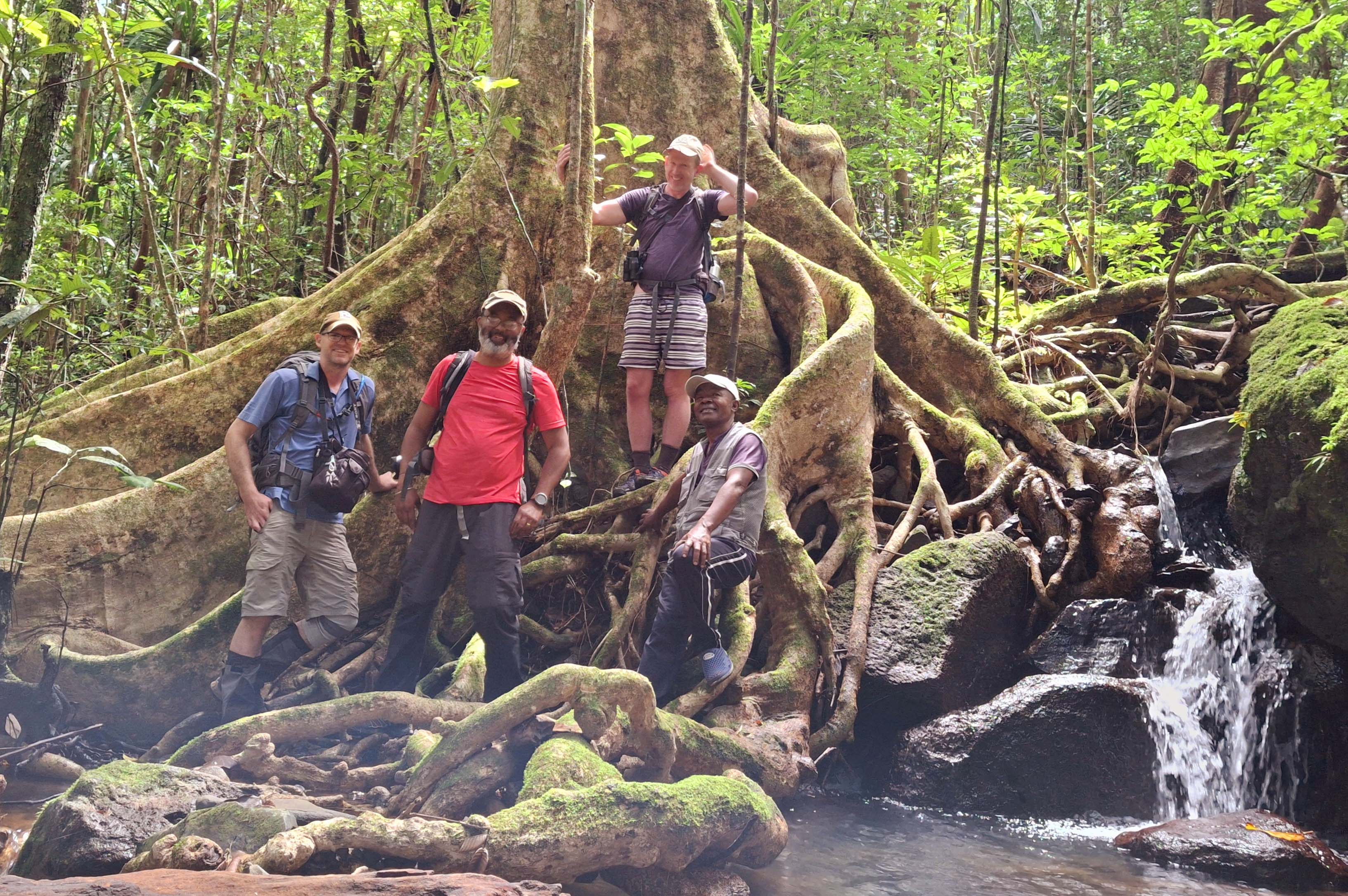08 January 2025
|
Story Prof Ralph Clark, Prof Jay le Roux, Dr Joro Rakotoarivelo, and Precious Shamase
|
Photo Supplied
 In the Masoala Peninsula Rainforest of Madagascar, where the team scouted an elevation transect for monitoring non-native species such as cinnamon. From the left: Prof Jay le Roux, Dr Joro Rakotoarivelo, Prof Ralph Clark, and Emile Rafaralahy (guide) standing in front of a massive Canarium tree (there are nine species in the area) – endemic to northern Madagascar and the preferred tree for dugout canoes.
In the Masoala Peninsula Rainforest of Madagascar, where the team scouted an elevation transect for monitoring non-native species such as cinnamon. From the left: Prof Jay le Roux, Dr Joro Rakotoarivelo, Prof Ralph Clark, and Emile Rafaralahy (guide) standing in front of a massive Canarium tree (there are nine species in the area) – endemic to northern Madagascar and the preferred tree for dugout canoes.
The
Afromontane Research Unit (ARU) at the University of the Free State (UFS) plays a leading role in the
Mountain Invasion Research Network (MIREN). This international collaboration investigates the impact of non-native plants on mountain ecosystems. In August and September 2024, a team from the ARU embarked on a field trip to Madagascar, scouting potential locations for implementing the standardised MIREN trail protocol.
The Malagasy montane forests
The expedition focused on two distinct mountain ranges in Madagascar. The first was the Ankaratra Massif, the island’s third highest, reaching a peak elevation comparable to South Africa’s Sentinel Peak. Unfortunately, Ankaratra is also the most degraded highland area in Madagascar, facing complex social-ecological challenges. Invasive plant species, including pines, wattles, and the aggressive mistflower, pose a significant threat to the remaining native ‘Malagasy montane’ forests.
The second target was the Masoala Peninsula range, with a lower peak but a steeper rise from sea level. While the team could not reach the heart of this rugged terrain, it successfully scouted the lower slopes of Masoala National Park, a lush rainforest fringed by pristine beaches and coral reefs. Here, the focus shifted to monitoring the potential spread of invasive cinnamon species, known to displace native vegetation in other island ecosystems.
Outcomes and future directions
Despite missing out on securing a research grant, the ARU team remains committed to its Madagascar Mountain Programme. Implementing the MIREN protocol on these two elevation transects serves as a valuable ‘low-hanging fruit’ project, allowing for immediate data collection on invasive species distribution. This data will contribute to global analyses of mountain ecosystems under pressure from non-native plants.
The ARU continues to seek funding and partnerships to expand its Madagascar research efforts, ensuring the long-term protection of these unique mountain environments.